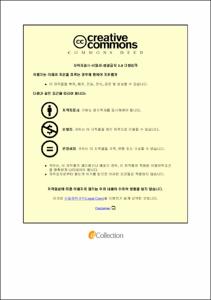Assessment of tribological properties of Ti3C2 as a water-based lubricant additive
- Alternative Title
- Assessment of tribological properties of Ti3C2 as a water-based lubricant additive
- Abstract
- The concern about the pollution created by the use of oil based lubricants has inspired research on green tribology solutions. Among the environmental-friendly lubrication currently under development, water-based lubrication technology interest due to its economic and environmental benefits, such as low cost, cleaning performance, natural resource conservation, and environmental sustainability. However, water-based lubrication is often limited in practical tribological applications, mainly due to its low viscosity and corrosivity. In order to overcome these limitations and improve the properties of water-based lubricants, extensive efforts have been made over the past decades (e.g., coating, surface texturing on the surface of sample). Furthermore, investigations have been conducted on the use of additives without environmentally harmful compositions has been proposed to overcome the limitations of water-based lubrication. Recently, 2D layered transition metal carbides and nitrides, MXenes, have attracted attention as candidates in the lubricant field due to its multi-layer structure which can easily shearing in order to reduce the friction and wear in the tribological system when the sliding occurs.
In this work, the tribological properties of titanium carbides (Ti3C2), a type of MXenes, as an additive in water-based lubrication was experimentally investigated using a ball-on-disk tribotester. Experiment were performed using stainless steel ball and disk at boundary lubrication under various normal forces and Ti3C2 concentrations in water. Both friction and wear were found to decrease with increasing Ti3C2 concentration up to 5 wt%, and then increase when the concentration was larger than 5 wt%. The results suggest that Ti3C2 flakes hindered direct contact, particularly at the edges of the contact interfaces. It was further shown that the agglomeration of Ti3C2 flakes may mitigate the hindering when an excessive amount of Ti3C2 (e.g., 7 wt%.) was applied. The decrease in the friction coefficient and wear rate with 5 wt% of Ti3C2 concentration was approximately 20% and 48%, respectively. The outcomes of this work may provide useful information to understand the effect of Ti3C2 on the tribological characteristic of stainless steel under water-based lubrication.
- Issued Date
- 2020
- Awarded Date
- 2021-02
- Type
- Dissertation
- Alternative Author(s)
- Nguyen Thi Huong
- Affiliation
- 울산대학교
- Department
- 일반대학원 기계공학
- Advisor
- Professor Koo-Hyun Chung
- Degree
- Master
- Publisher
- 울산대학교 일반대학원 기계공학
- Language
- eng
- Appears in Collections:
- Mechanical Engineering > 1. Theses(Master)
- 파일 목록
-
-
Download
 200000363818.pdf
기타 데이터 / 2.71 MB / Adobe PDF
200000363818.pdf
기타 데이터 / 2.71 MB / Adobe PDF
-
Items in Repository are protected by copyright, with all rights reserved, unless otherwise indicated.